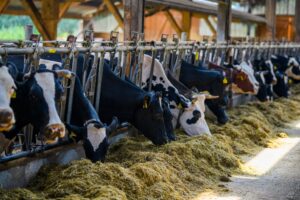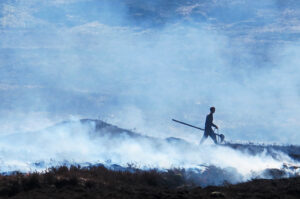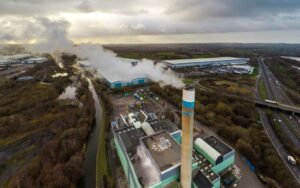Government has today (22 May) committed to introducing new primary legislation creating a ‘new legal air quality framework’ and giving more powers to local government to take action on the issue.
The pledge is at the core of the Department for Environment, Food and Rural Affairs’ (Defra) Clean Air Strategy, which will be published for consultation this morning.
Michael Gove, Secretary of State for the Environment. (Picture: Shutterstock)The strategy sets out the government’s plan to meet the 2020 and 2030 emissions ceilings for the key pollutants set out in the National Emissions Ceilings Directive (NECD).
According to government, this will see the number of people living in locations where concentrations of particulate matter are above the WHO guideline limit of 10ug/m3 halved by 2025.
FULL TEXT: Draft Clean Air Strategy
IN SUMMARY: Clean Air Strategy Proposals
In a wide ranging set of proposals, government has promised that legislation will ensure that ‘only the cleanest domestic fuels’ will be available for sale, preventing the emission of harmful particulate matter as well as pledging ‘concerted action’ to tackle ammonia from farming by requiring farmers to invest in the infrastructure and equipment that will reduce emissions.
Farmers will be supported to achieve this through a new system of ‘public money for public goods’, Defra has said.
Tyre and brake-wear
The government has also promised to work with international partners to research and develop new standards for tyres and brakes to address toxic non-exhaust emissions of micro plastics from vehicles which can pollute air and water.
Defra is keen to see cleaner fuels used in householdsAlongside this, Defra has promised to provide a personal air quality messaging system to inform the public, about the air quality forecast in their area, providing ‘clearer information on air pollution episodes and accessible health advice’.
Ministers have also promised to give local authorities new powers to take ‘decisive action’ in the most polluted areas through local Clean Air Zones that can lower emissions from a wider range of sources than transport alone, including powers to control the use of diesel-powered machinery and to ensure cleaner domestic burning.
Launching the proposals today, Environment Secretary Michael Gove said: “Air quality has improved significantly since 2010 but sixty years on from the historic Clean Air Act a clear truth remains – air pollution is making people ill, shortening lives and damaging our economy and environment.
“This is why today we are launching this clean air strategy, backed up with new primary legislation. It sets out the comprehensive action required across all parts of government to improve air quality.”
“Government cannot act alone in tackling air pollution. Our strategy sets out how we will work with businesses, farmers, industry and households to develop innovative new solutions to reduce emissions. It also highlights how we can all take action and playing an important role in cleaning up our air.”
Economic impact
Also announced today, by Health Secretary Jeremy Hunt, is a new tool for local authorities developed for Public Health England by Imperial College and the UK Health Forum which will enable local authorities to estimate the economic impact of air pollution in their area.
The tool takes account of the cumulative cost for diseases where there is a strong association with air pollution: coronary heart disease; stroke; lung cancer; and child asthma.
Secretary of State for Health and Social Care, Jeremy Hunt said: “Air Pollution is contributing to a national health crisis. If we fail to take decisive action, we risk more of our children suffering from asthma, and patients needlessly ending up in hospital.
“Our health service can only go so far in treating the conditions that dirty air can contribute to, and we have a responsibility to stop this issue at source. Today’s Clean Air Strategy and Air Pollution Tool do just that, taking a giant step towards cleaning up our air for good.”
Related Links
Draft Clean Air Strategy
















